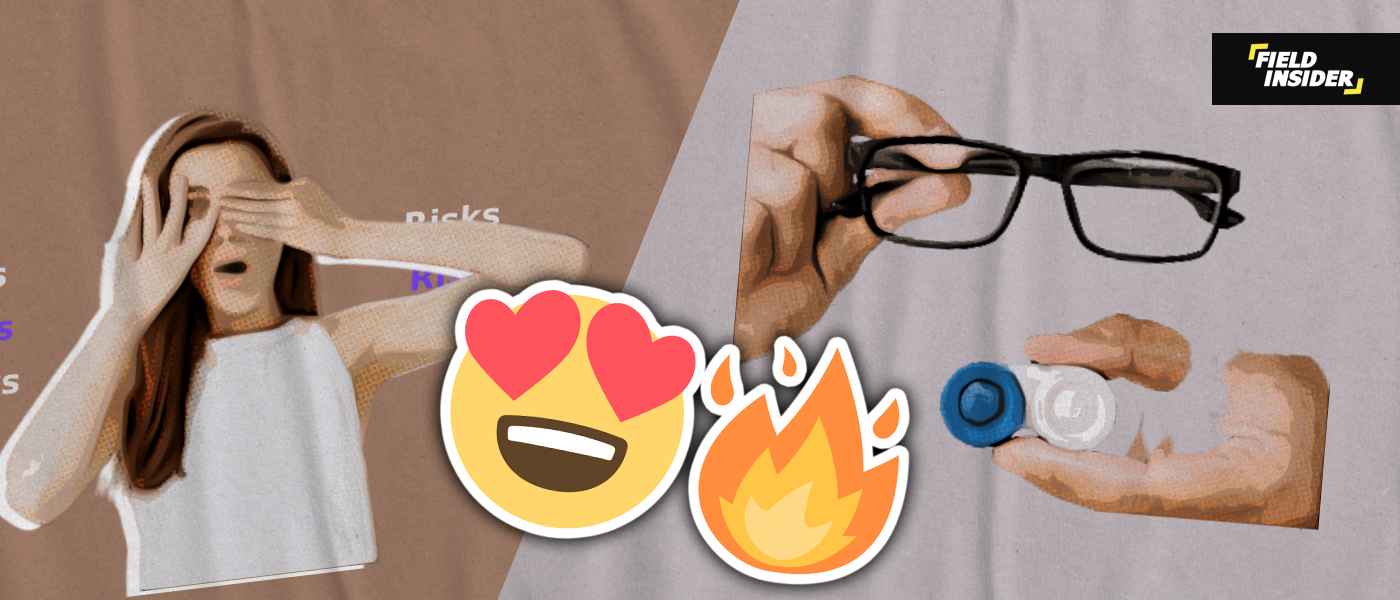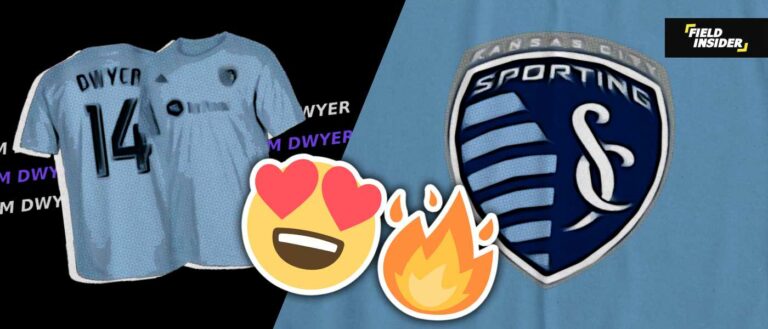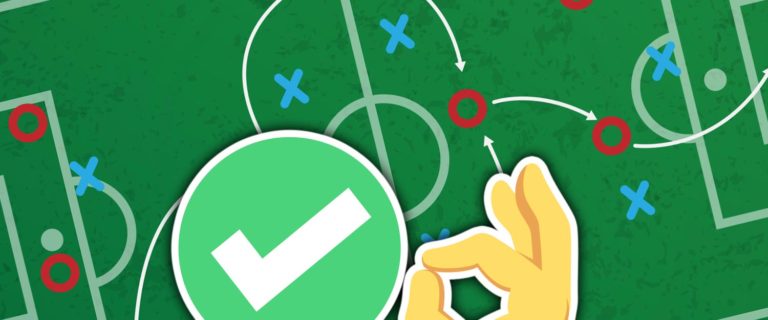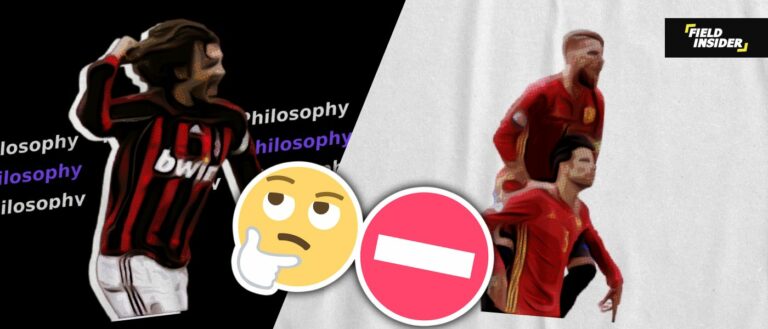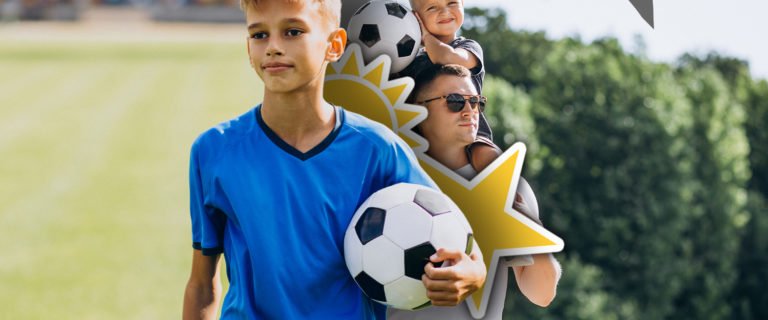Footballers Wearing Contact Lenses: Looking Into It
To excel in professional football, multiple attributes are fundamental. These encompass inherent skill, physical prowess, and the ability to think on one’s feet. But with all this, is it vital we do not overlook the critical aspect of vision.
In football, clear and sharp vision is indispensable. It facilitates rapid decision-making and enhances situational awareness, both of which are pivotal in keeping track of both teammates and adversaries on the field.
The capability to swiftly and accurately assess the situation and act accordingly is what sets apart the exceptional from the merely good players. And impaired vision does not bode well for soccer players.
The idea of having 20/20 vision means possessing an ideal level of sight, unaided by glasses or contact lenses. Regardless, only 35% of adults have this level of sight model.
Key Takeaways
| Aspects | Key Information |
|---|---|
| Glasses Vs Lenses | What are the differences between glasses and lenses? |
| Lenses Types | What are the types of lenses used? |
| Benefits | How do they impact sight and performance? |
| Research | Data and analysis on the effect of lenses in sports. |
| Challenges and Risks | Undesirable outcomes that accompany their use. |
| Reasons For Sight Improvement in Football | Why is having excellent vision important in football? |
| Honorable Mentions | Renowned soccer players who use contact lenses. |
Glasses vs Contact Lenses for Footballers

Glasses and contact lenses can help you achieve 20/20 vision. However, you will rarely see players wearing glasses or sports goggles.
However, players most often choose to wear contact lenses instead of glasses and goggles. This preference arises because glasses and goggles tend to create blind spots in vision.
In addition, they cause a level of distortion to images. This is also beside the fact that they tend to be removed, fall off, and are not suitable for a contact sport such as football.
But when are take a look at contact lenses for footballers, they tend to have looked into all the shortcomings. This means they are more comfortable, can withstand the rigorous demands of football, and provide clear sight with a wide range of vision.
Glasses are A ‘red flag’
Glasses are also a safety hazard. When knocked or bumped, a plastic rim that sits on the nose and around the head can cause injuries.
Suppose a player uses their arm or elbow to make contact during an aerial battle with a player who is wearing glasses, the plastic rims are more likely to result in cuts and bruises on the player’s face.
Not only that, but glass lenses are even more dangerous. This is because they have higher tendencies to shatter in a football game, making it a high risk.
This is also true for sports goggles. Although they are more durable, they still have a risk of breaking, especially in a sport that involves making contact with the ball with the head.
types of contact lenses
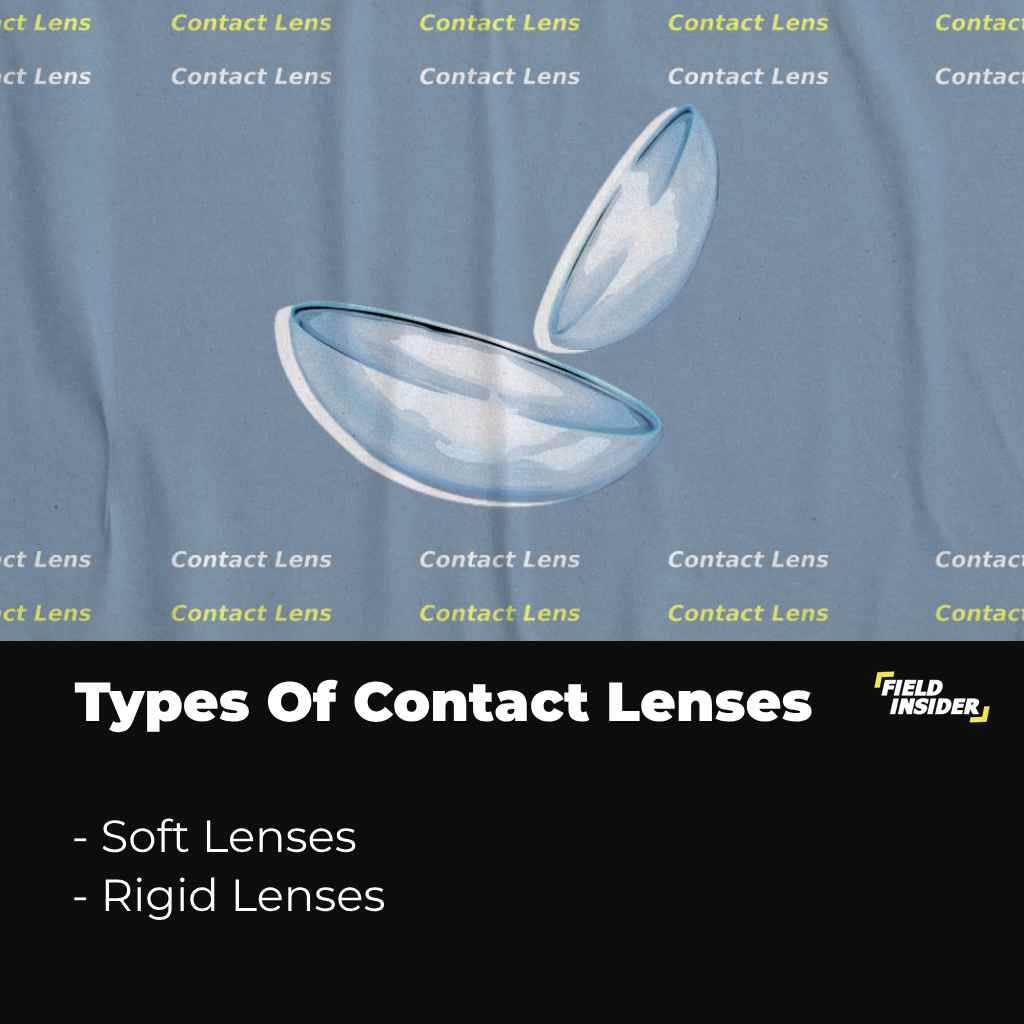
Contact lenses are classified into two types: rigid and soft. Soft lenses are recommended for footballers because they are more suitable for movement and are less likely to become dislodged.
Soft lenses are also less dangerous in terms of causing eye damage. It is extremely unlikely that a ball or any other object would cause a break or splinter in the eye of footballers wearing soft contact lenses.
Contact lenses cannot go behind the eye and are extremely unlikely to become lodged in the eye in a location where they cannot be easily retried.
The worst that can happen to a footballer wearing contact lenses is that the lens becomes slightly dislodged or falls out of the eye.
What Are The Benefits of Using Contact Lenses in Football?

1. Correction of Sight Defects
For soccer players who suffer from eye defects due to refractive errors of the eye, such as the inability of the eyes to bend or focus light properly, the use of contacts is a preferred solution.
Therefore, it means wearing contact lenses is advisable for footballers who have astigmatism, farsightedness, and nearsightedness.
All these conditions cause blurred vision, and since contact lenses are implanted in the eye, they can adjust the refracting angle and correct sight. This in turn results in higher efficiency at which footballers play.
2. Reduces Risk of Eye Injuries
In addition to correcting sight problems, using contact lenses offers a reduced risk of injury when compared to eyeglasses. This means they are advisable for sporting activities such as football.
When using contact lenses, soccer players who use them to correct an eye defect are more protected against injuries than players who use eyeglasses.
This is because, as explained earlier, they are protected from shrapnels of glass that might occur from broken eyeglasses during collisions in football.
3. Improves Sight
From UV-ray protection to the fact that they don’t fog up or collect precipitate from rain or snow, contact lenses offer better sight-improvement qualities than eyeglasses.
Also, since the level of sight quality is very important in football, it improves the performance of players.
In addition, the use of contacts offers better peripheral vision. This is a major enhancement in contrast to the limited field that is available when using regular eyeglasses.
This means that footballers wearing contact lenses are better suited to see not just in front of them but also around them, without the need to completely turn their heads to the position.
Why are Footballers wearing Contact Lenses?
To begin with, contact lenses improve vision. Because the lenses are round and completely cover the eye, vision in all directions is unaffected. Glasses sit further away from the eye, resulting in less accurate vision correction.
glasses are simply not viable!
In certain conditions, glasses can steam up and become smeared on the lenses, making them unclean. In sunny conditions, the same specs can be affected by reflections.
Even when lenses are designed to be anti-glare, there is still some glare and reflection that isn’t present.
Contact lenses are also worn by football players because they are more durable, require less adjusting, and are less likely to be damaged during a game.
It may appear that having a foreign object in the eye during an intense, high-contact sport is risky. To the contrary, it is actually not very dangerous at all, and contact lenses are extremely unlikely to cause harm to a player.
Contact Lenses in Sports: A Study
Research published by Gale Academic, titled “Global trends in contact lens use in sports: contact lenses not only improve performance – their use is a predictor of participation”, studies the participation of contact lens and eyeglass wearers in sports.
For most people, contact lenses are preferred for sports due to several benefits over spectacles. Some of these include a wider field of view, more accurate object size, and better depth perception.
The decision to use contact lenses is often influenced by sports participation, with studies showing that contact lens wearers are more active in sports.
The NSIGHT Study found that contact lens wearers are 2.2 times more likely to be active in sports than those who wear spectacles, regardless of the type of sport.
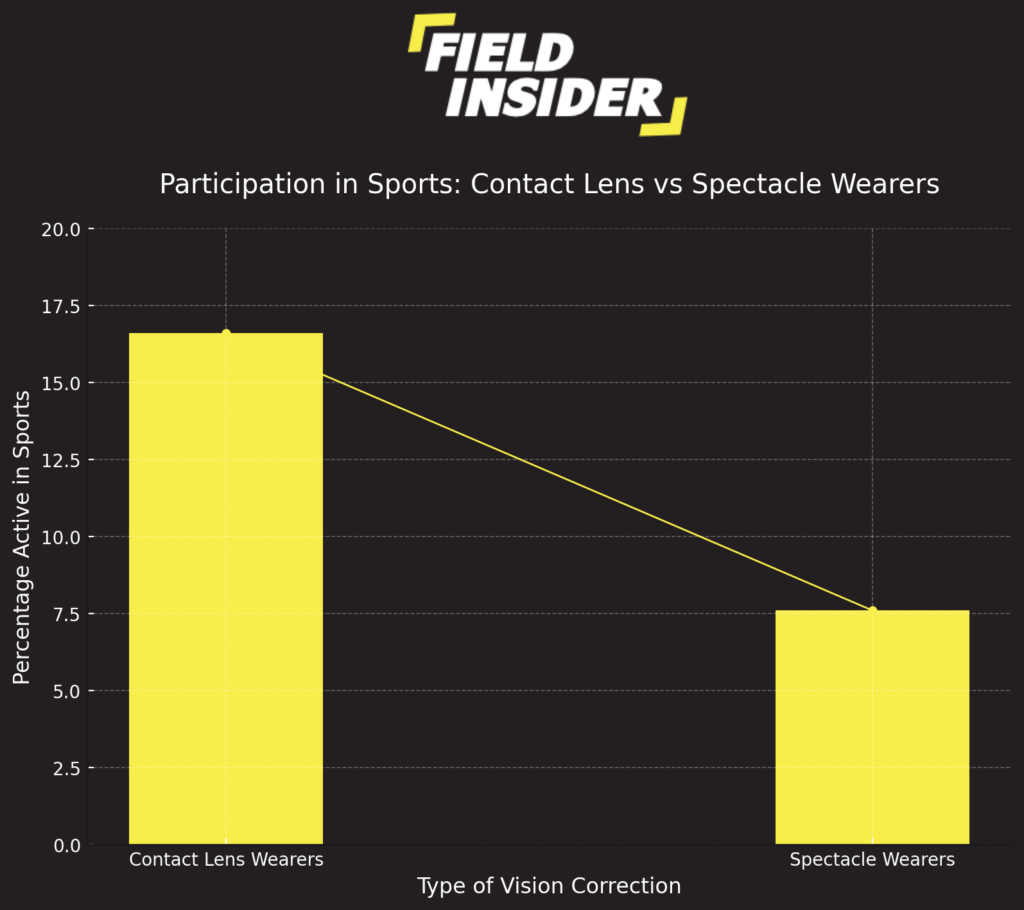
The downside of Footballers wearing Contact Lenses
This brings us to the potential drawbacks of footballers wearing contact lenses. The lens has a small chance of falling out of the player’s eye.
When this happens, it is nearly impossible to find the lens again because it is completely see-through.
If this happened during a game, the players’ vision would be so impaired that they would have to resolve the issue immediately by replacing the lens.
Football clubs and medical staff should ensure they have ready replacements for players who wear contact lenses.
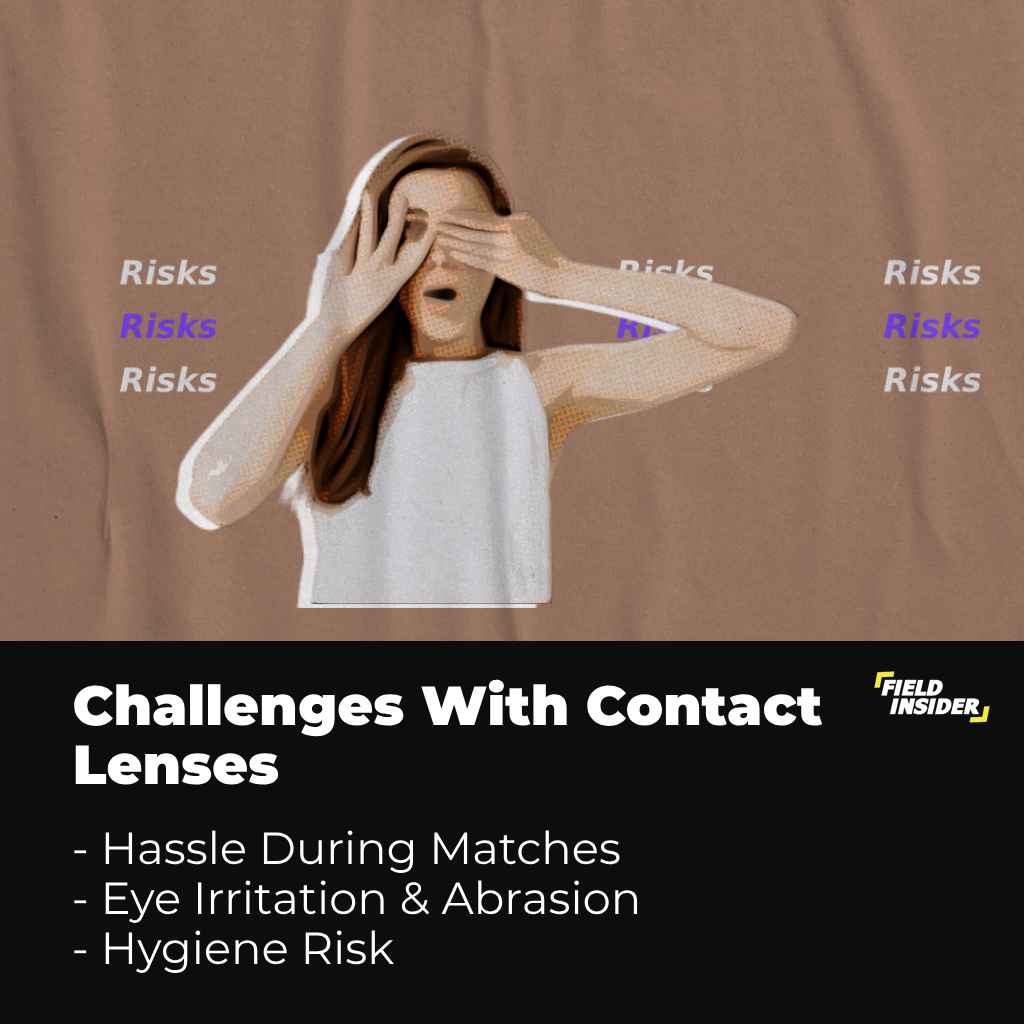
1. an out-of-the-way hassle
Another disadvantage is that contact lenses can be difficult to use. Contact lens wearers will either have daily disposable lenses or monthly lenses.
Footballers who wear contact lenses must remember to bring multiple pairs with them when traveling overnight, as these lenses must be discarded after each use.
2. hygiene risks
Players most likely use these types of contact lenses because they pose a lower risk of infection due to their disposable nature. Users discard them after each use, unlike monthly lenses, which require cleaning and disinfecting after every use, often proving inconvenient.
They may not be cleaned properly, which can lead to infections, and they are also more expensive to replace if lost or damaged. A professional footballer, on the other hand, is unlikely to have this problem!
Finally, football players who wear contact lenses may struggle to insert them or have sensitive eyes. This is a common problem for people who first start wearing contact lenses, but most people quickly adjust to the sensation.
Players would be urged to use lenses if necessary, so even if they dislike them, failure to do so could jeopardize their careers.
3. Eye Irritation and Abrasion
Wrong placement or excessive use of contact lenses can cause itching, which could lead to swelling of the cornea and irritation.
Constant removal and periodic replacement of contact lenses, along with injuries from trying to take them off and the use of contact solutions, all add up to the causes of eye irritations and possible abrasions.
4. Lenses Dislodging In The Eye
Under certain circumstances, there are cases in which contact lenses can dislodge the eye by coming off or moving to the wrong position in the eye. A lens coming off the eyes during competitions such as football can leave a player with the need to find a replacement.
However, if it moves to the wrong position in the eye, it can be more severe. This is because it will need to the carefully taken out and can cause injuries in the eye.
Importance of Visibilty in Football: United’s Grey Kit Conundrum
The importance of good vision in football cannot be overstated. Manchester United famously wore a grey away kit against Southampton in a Premier League match in 1996.
After halftime, they emerged from the locker rooms in a completely different color strip. This was all related to the issue of players’ vision on the field.
analysis of a vision specialist
During the tenure of Sir Alex Ferguson at Manchester United, the club employed Gail Stephenson, a specialist in vision, who highlighted the crucial role of player vision in the game.
Stephenson determined that players not performing well post-injury, seeming unfocused, or committing numerous errors were not necessarily lacking in fitness, ball practice, or tactical knowledge. Rather, she theorized that their vision might be compromised.
Essentially, developing the habit of constant visual scanning takes time, and players need prolonged and consistent game play to adapt their vision to the game’s pace.
The use of vivid colors enhances vision on the field. This principle led to the halftime switch from a grey kit to a more vibrant one, illustrating the challenges players might face with even slightly impaired vision or if their vision doesn’t meet the optimal 20/20 standard.
Renowned Footballers wearing Contact Lenses

David De Gea
David De Gea, formerly Manchester United’s goalkeeper, has admirably overcome the challenge of longsightedness, a condition potentially detrimental to a role that demands exceptional vision.
By utilizing contact lenses, De Gea has not only compensated for his vision impairment but has also excelled in his position.
He had consistently been one of the Premier League’s top goalkeepers, known for his incredible shot-stopping abilities, quick reflexes, and excellent decision-making skills.
His accolades include multiple selections for the PFA Team of the Year, recognition as Manchester United’s Player of the Year several times, and being a crucial part of the team during their successes in the Premier League and other competitions.
Cristiano Ronaldo
Cristiano Ronaldo, one of football’s all-time greats, effectively uses contact lenses to correct his vision, a testament to their safety and suitability even in high-contact scenarios.
Despite the physical demands of the sport and about 20% of his goals coming from headers, where the ball is in close proximity to the eyes, Ronaldo’s use of contact lenses has not hindered his performance.
His remarkable achievements, including multiple Ballon d’Or awards, a plethora of goals scored across different leagues, and numerous titles with various clubs, underscore the efficacy of contact lenses in professional sports, even in situations involving direct head and eye area contact.
Paul Scholes
Paul Scholes, the legendary former midfielder, adeptly used contact lenses to correct his vision, enhancing his already extraordinary playmaking skills. Renowned for his masterful control and precision in passing, Scholes’s ability to create plays from the center of the field was pivotal.
His excellent vision, crucial for observing teammates’ positions, assessing time on the ball, and executing both long and short-range passes, contributed significantly to his achievements.
Scholes’s career was marked by numerous accolades, including multiple Premier League titles and Champions League triumphs with Manchester United, solidifying his status as one of the finest ever midfielders and demonstrating the critical role of good vision in football, especially in midfield positions.
Exceptions & Alternatives
Of course, there is one obvious exception when it comes to football players wearing contact lenses, Edgar Davids.
The Dutch midfield maestro was famous for wearing sports goggles during matches, owing to the fact that he was the only elite player to do so.
the case of Edgar Davids:
Davids was unable to wear contact lenses because they did not provide the necessary eye protection. That was due to the fact that he had glaucoma surgery on his right eye.
He was extremely fortunate that the surgery was a complete success, as his vision appeared to be permanently impaired.
His eyes, however, were frail, and any significant blow to the eye could have resulted in serious complications. As a result, he wore elastic goggles, which provided safety without impairing his peripheral vision too much.
laser-eye surgery:
Another option is laser eye surgery. This eliminates the need for contact lenses or glasses to correct poor vision.
This procedure was once considered dangerous because it could result in eye damage or blindness if done incorrectly.
However, this treatment is now thought to be much safer, particularly for elite athletes who can afford specialist treatment with the best eye doctors.
Conclusion
Overall, wearing contact lenses is completely safe and common among football players. Sports goggles and glasses do not provide the same level of vision and can be less safe and comfortable.
Footballers today want to look good and be fashionable while playing, and wearing glasses or sports goggles isn’t always the best look.
The only thing contact lens wearers must ensure is that they or the medical team always have spares in case they are knocked out during a game.
To play at the highest level, 20/20 vision is required, so footballers wear contact lenses to achieve optimal vision in the safest and simplest way possible.


